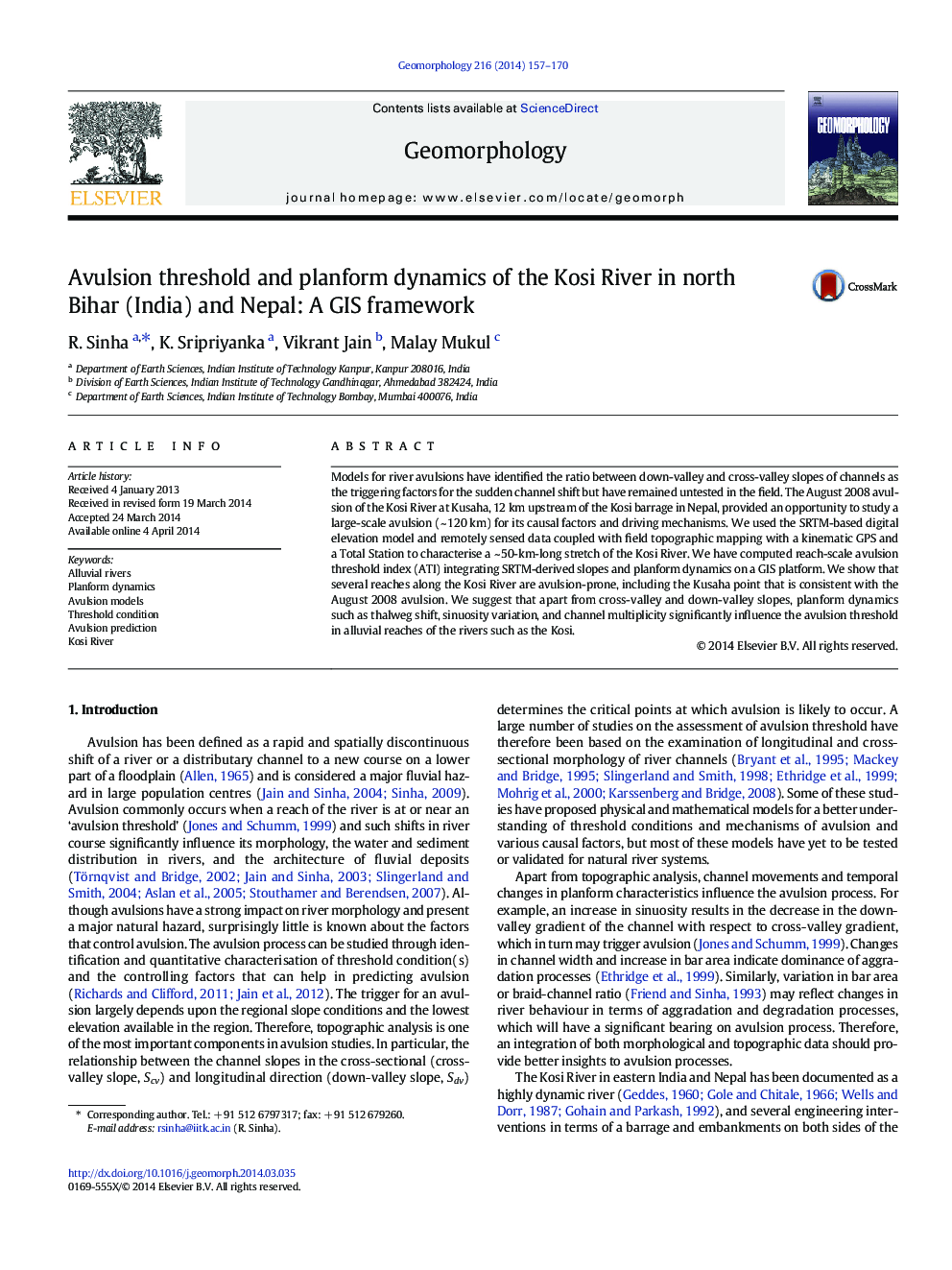| Article ID | Journal | Published Year | Pages | File Type |
|---|---|---|---|---|
| 4684521 | Geomorphology | 2014 | 14 Pages |
•Documents one of the largest avulsions (Kosi River) affecting ~ 3 million people•Proposes an avulsion threshold index integrating planform dynamics in GIS•Identifies excessive sediment flux and human interventions as major causal factors•Identifies future avulsion sites and suggests monitoring of critical reaches
Models for river avulsions have identified the ratio between down-valley and cross-valley slopes of channels as the triggering factors for the sudden channel shift but have remained untested in the field. The August 2008 avulsion of the Kosi River at Kusaha, 12 km upstream of the Kosi barrage in Nepal, provided an opportunity to study a large-scale avulsion (~ 120 km) for its causal factors and driving mechanisms. We used the SRTM-based digital elevation model and remotely sensed data coupled with field topographic mapping with a kinematic GPS and a Total Station to characterise a ~ 50-km-long stretch of the Kosi River. We have computed reach-scale avulsion threshold index (ATI) integrating SRTM-derived slopes and planform dynamics on a GIS platform. We show that several reaches along the Kosi River are avulsion-prone, including the Kusaha point that is consistent with the August 2008 avulsion. We suggest that apart from cross-valley and down-valley slopes, planform dynamics such as thalweg shift, sinuosity variation, and channel multiplicity significantly influence the avulsion threshold in alluvial reaches of the rivers such as the Kosi.
